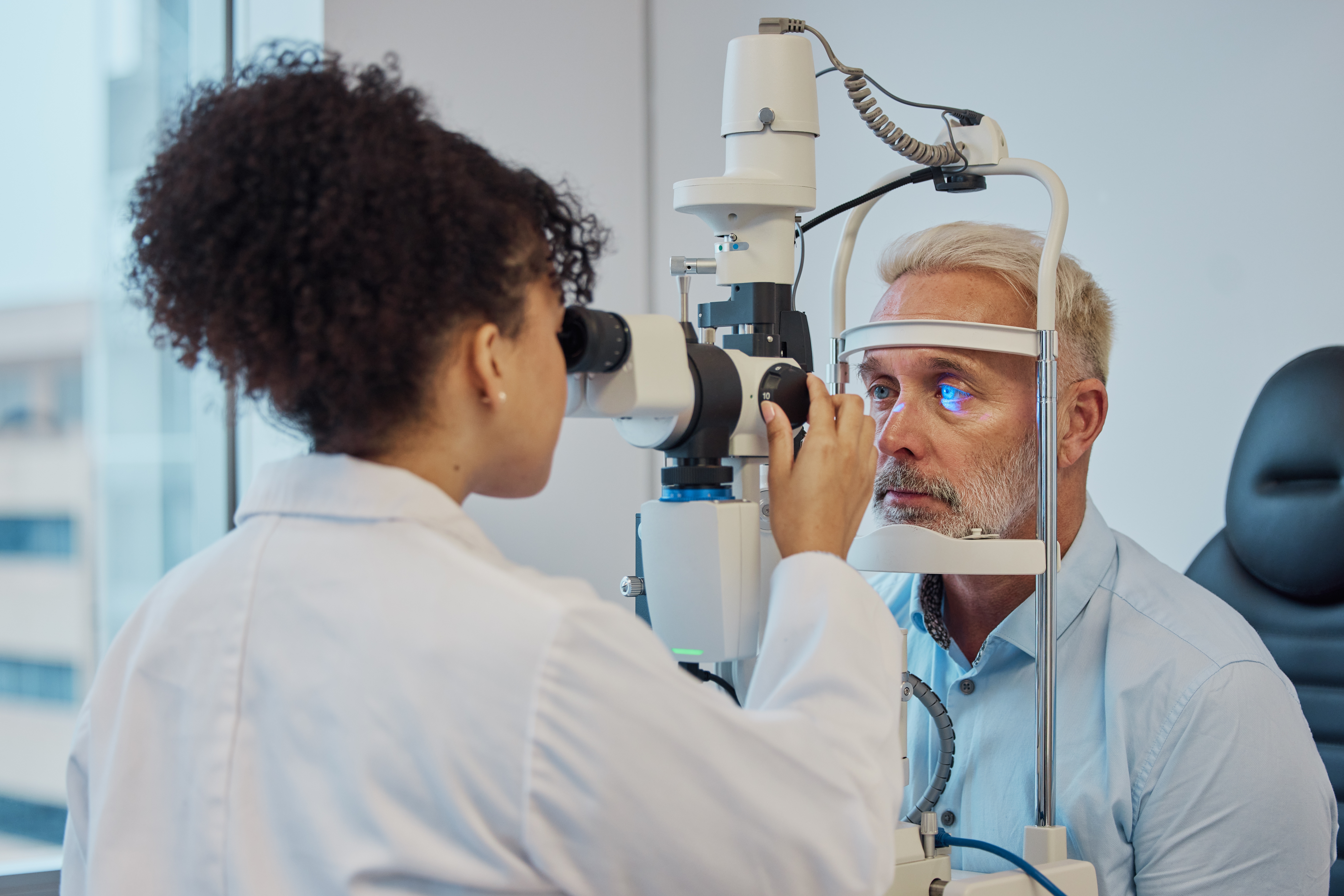For those unaware, diabetic eye disease refers to a group of eye diseases linked to unmanaged diabetes. There are several types of eye diseases linked to diabetes, but the most common among them is diabetic retinopathy. This form occurs when small blood vessels in the retina are damaged due to prolonged high blood sugar levels. Of course, diabetic retinopathy is not the only vision problem associated with diabetes:
Additional Diabetic Eye Diseases
There are many other eye conditions that develop diabetic eye disease including macular edema, cataracts, and glaucoma.
Macular Edema
Macular edema is a condition that causes fluid build-up and swelling. The macula is located near the center of the retina and helps you to see directly in front of you. This condition can stem from many things, including prolonged high blood sugar levels. Individuals diagnosed with macular edema usually suffer from blurred vision.
Cataracts
Unstable blood sugar triggers cataracts to develop in the eyes. Cataracts create changes in the lens of one or both eyes, causing cloudy, hazy, or blurred vision. Surgery is a common treatment for the condition. Additional symptoms typical of cataracts include the following:
- Faded colors and distorted vision
- Poor night vision
- The appearance of halos
- Worsened nearsightedness
Glaucoma
Glaucoma is a group of diseases that cause damage to the optic nerve. The condition is hard to notice in the beginning stages. In later stages, symptoms typically emerge. Symptoms typical of glaucoma include the following:
- Blurred vision
- Eye pain
- Headaches
- Nausea
- Red eyes
- Tenderness around the eyes
- The appearance of halos
Treatments for Diabetic Eye Disease
Regardless of the type of diabetic eye disease someone has, they must get their blood sugar levels under control to manage their eye health to the best of their ability. It is also worth noting that doing so can prevent eye problems from occurring in the first place.
Treatments for Diabetic Retinopathy
That aside, one treatment option for advanced diabetic retinopathy entails injecting vascular endothelial growth factor inhibitors into the affected eye to halt the growth of new blood vessels and decrease fluid buildup. Another option involves laser treatments which slow down the leaking of blood and fluid from the eye and shrink abnormal blood vessels caused by advanced diabetic retinopathy.
Treatments for Macular Edema
Treatment options for macular edema caused by diabetes include the same injections prescribed to treat advanced diabetic retinopathy. Focal laser treatment to reduce swelling in the center part of the retina is also another go-to treatment for this diabetic eye disease.
Treatments for Cataracts
Treatments for cataracts caused by diabetes include getting a new eyeglass prescription with an anti-glare coating and using brighter lights when reading or engaging in other tasks that call for crisp and precise vision. When cataracts begin affecting daily activities, or the vision has decreased, individuals may need to undergo eye surgery, which entails removing the clouded lens over the affected eye and replacing it with a clear, artificial one.
Treatments for Glaucoma
Prescription eye drops are standard for combating early-stage glaucoma. Some physicians also prescribe a carbonic anhydrase inhibitor, an oral medication that helps lower high eye pressure commonly associated with glaucoma. In other cases, physicians may recommend surgery to lower eye pressure.
Where to Have Your Treatment
Individuals who have diabetes are at risk of developing several diabetic eye diseases that can rob them of their eyesight. The best way to prevent this is to get a dilated eye exam yearly and not wait until symptoms appear. Schedule a consultation with the expert team at Advanced Eye Surgeons in Boca Raton or Tamarac, Florida.
